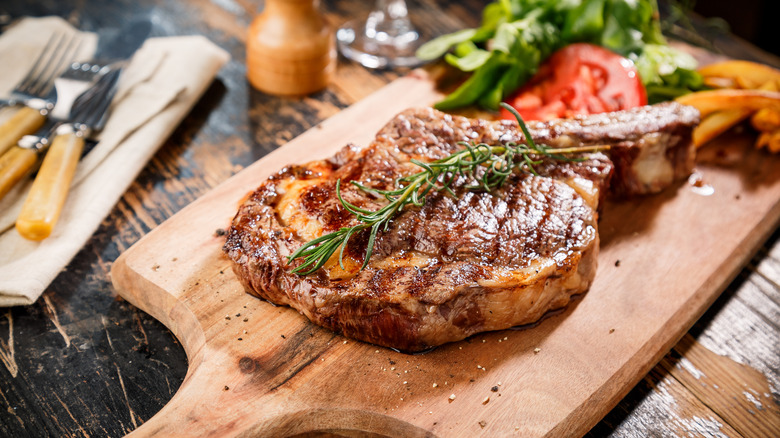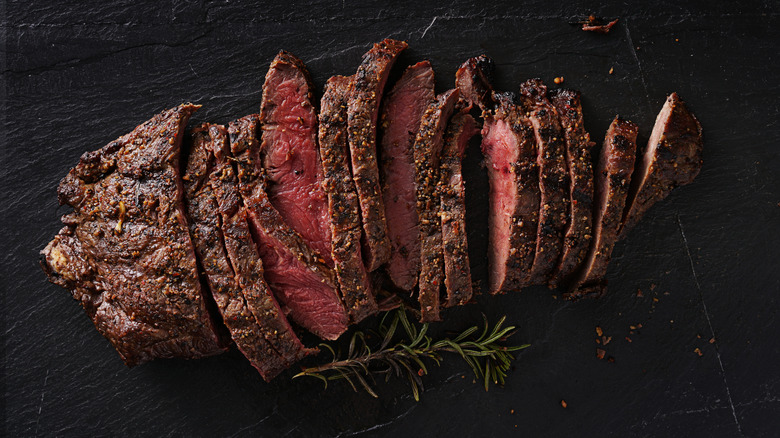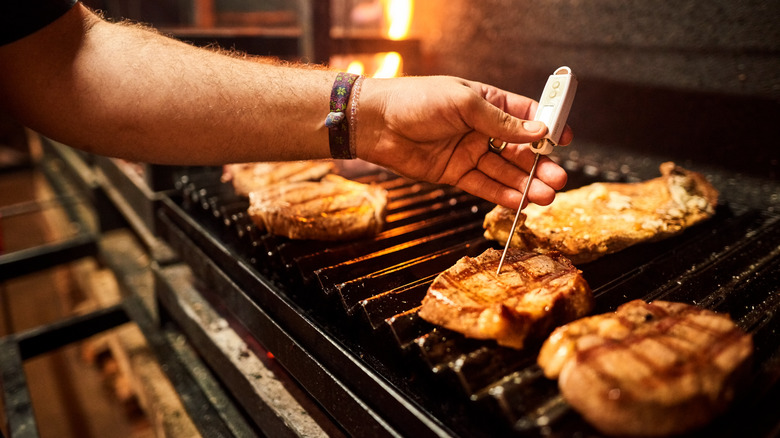Here's How Long Meat Actually Needs To Rest After Grilling
There's nothing quite like a grilled piece of meat and all the good things that come with it: the char that gives it that blackened color, the perfect sear that gives it a crispy outer edge, the smoke from the fire that infuses it with flavor, and the tenderness that gets locked in from the high heat.
But sometimes, the most challenging part about grilling a good piece of meat is waiting to cut into it. We've all been told to let our meat rest once it's done cooking. But how long do we let it sit before we can dig into it? A minute? Ten? The answer is that it depends entirely on what kind of meat you're cooking and how long it's on the grill — you should let your meat rest for half the amount of time that you cooked it.
That means that if it took 18 minutes to grill a thick steak, you should let it rest for around 9. If it took 12 minutes to barbecue some chicken thighs, let them sit for 6. You get the idea, right? Regardless of what you grill, resting for half the cooking time is a good rule of thumb to optimize its juiciness and flavor.
Why does meat need to rest, anyway?
For some, this may seem like a throw-away grilling tip that doesn't make much of a difference. But there's a reason why your meat should rest, and it goes for any kind of meat you grill — whether it's chicken, pork, steak, or whatever else you like to throw on the old barbecue.
Once the meat is done cooking, it's still extremely hot when you pull it off the grill, which means that its juices are more runny and haven't quite set. So when you cut into it, they'll spew everywhere, leaving dryer, tougher meat in their wake. A little patience will prevent this by allowing the piece of meat to reach its full potential.
If you let the meat rest (ideally for about as half as long as it took to cook on the grill), then all of those muscle fibers inside have a chance to relax, letting the juices distribute throughout the cut and producing a more tender, juicier piece of meat in the process.
Good meat is all about temperature
Grilling a delicious piece of meat is not just about cooking and resting time but also about the temperature of the meat — both during and after the grilling — so it's important to pay attention throughout the cooking process.
Depending on what type and cut of meat you're grilling, go into your grill sesh with an ideal final temperature in mind, whether that's 135°F for a medium-rare steak or 190°F for a rack of pork ribs. Here's the important part: take your meat off the grill a couple of minutes before it reaches that ideal temperature because it'll keep cooking while it rests.
Once you've employed the old rest-for-half-the-cooking-time rule, to be extra sure your meat is at its ideal tastiness, check the temperature at the center of the cut. Once it registers around 120°F, it's ready to devour.



